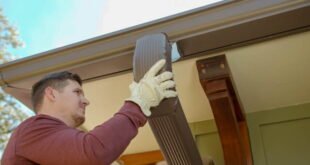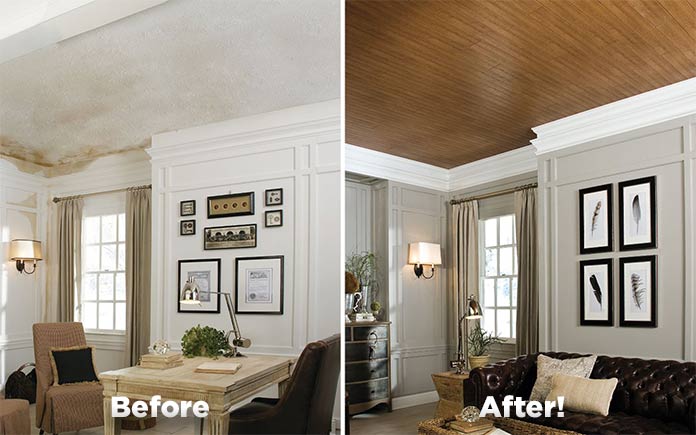
Textured, or popcorn, ceilings predate the 1970s and — like lots of things from that era — are out of style for homeowners and home buyers.
Removing these eyesores is a messy job that takes a lot of time. If you want a better option, you can just cover popcorn with planks that come in many styles to match your home’s interior design.
Best of all? It’s a do-it-yourself job that’s fast to tackle.
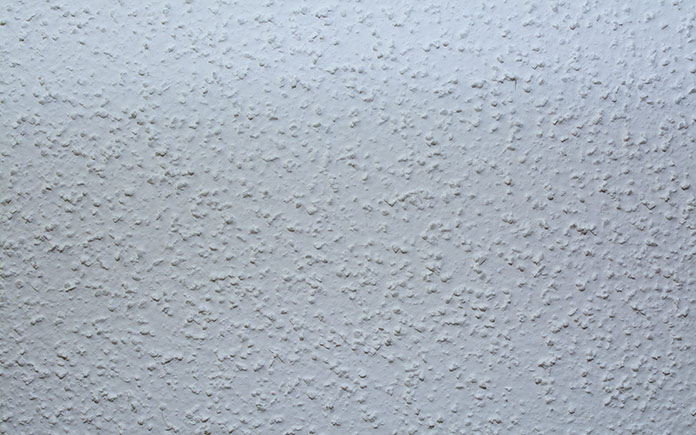
What You Should Know About Popcorn Ceilings
Before you touch a popcorn ceiling, you need to know about two things: asbestos and paint.
Materials used to make popcorn ceilings manufactured before 1980 may contain asbestos — which can cause cancer or mesothelioma — so testing the surface is a must.
As for paint, it’s extremely difficult to remove painted popcorn because you need water to loosen the material, and paint blocks the underlying texture from absorbing moisture.
Yes, removing popcorn requires a ton of prep work, elbow grease and a lot of cleanup afterward — but if you want to go ahead with the process watch this video: How to Remove Popcorn Ceilings.
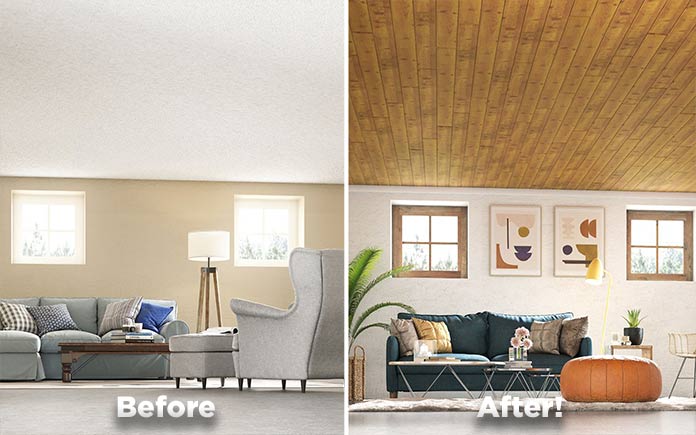
How to Cover Popcorn Ceilings with Planks
There’s a much faster way to replace popcorn and it requires less mess: cover it with planks!
Armstrong Ceilings’ Easy Up system breaks it down to three steps: install tracks on the ceiling, snap clips into the tracks and mount the planks. There’s minimal cleanup, and you could clear out any afternoon or evening for this job.
If you use the Easy Up system, install the tracks perpendicular to the joists and use thread screws for each support. Expect to cut the tracks with a hacksaw to fit your ceiling, and you’ll need to cut the planks to fit around your ceiling’s corners and edges.
Depending on your room, there may be some additional considerations. For instance, you may need to scrape off the heaviest texture of the ceiling before installing the tracks. (Again, take an asbestos test, and only sand the ceiling if results are negative) If the existing ceiling has some hills and valleys, a few wood shims placed between the track and ceiling can improve the end visual of the ceiling.
In addition, if the ceiling has trim, like crown molding, go ahead and remove it before installing the planks.
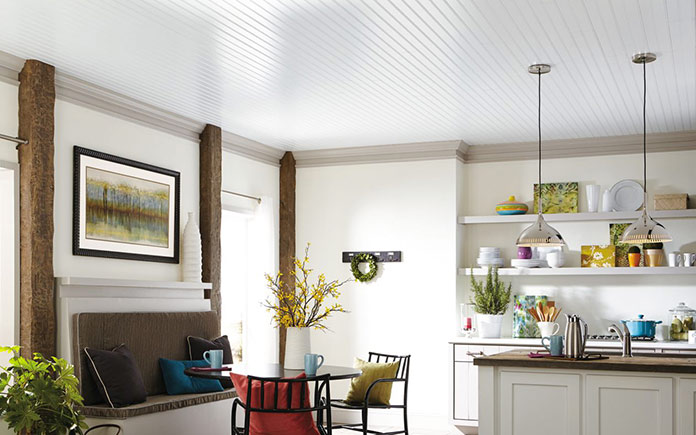
Types of Ceiling Covers
The great thing about covering textured ceilings with planks is the number of options on the market, and how a plank ceiling can instantly transform a room.
Wood grain’s natural beauty makes any room feel warmer and more welcoming. Armstrong’s WoodHaven wood-look ceiling planks come in various colors and finishes — such as beadboard, driftwood, cherry and pine — to match an array of styles.
White beadboard is another timeless style that gives any room a bright, airy character. The shiny pinstripe has an added benefit: it reflects light unlike a flat popcorn ceiling, and makes the space feel more open.
Ready to replace your popcorn? Learn more about how to cover a popcorn ceiling with Armstrong WoodHaven Planks.

